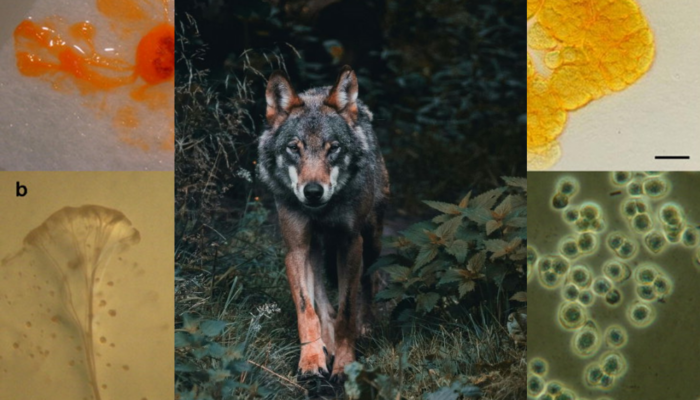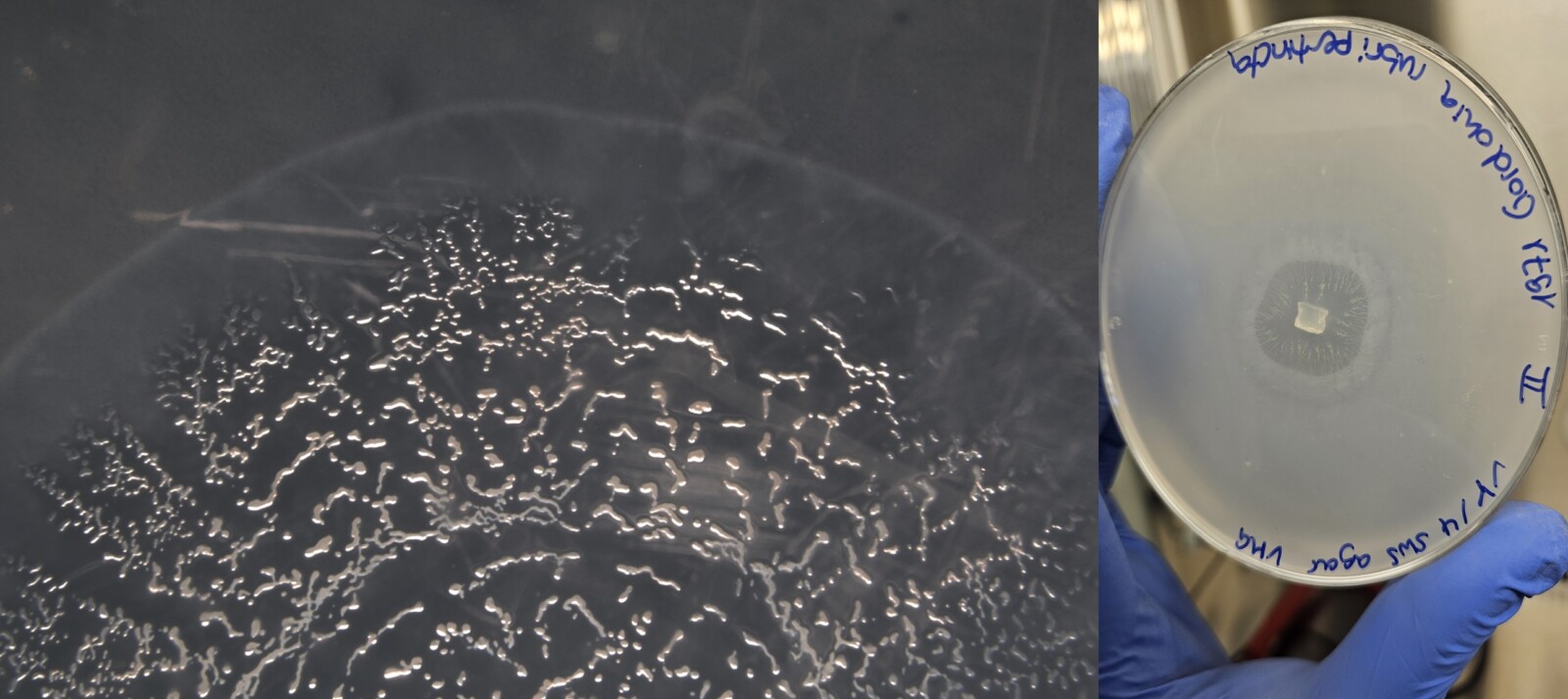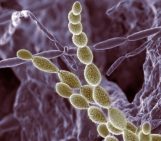
Picture this: bacteria that can slime their way around the soil, finding their prey, circling it, closing in on it and lysing it (or making their cell pop), just to feed on their prey. It sounds like a far stretch from a wolf to a bacteria, but even other soil predators, the comparably huge nematode worms ( up to 100 times bigger!), are afraid of these bacterial “wolves”. I went to the Soil System Science Poster session and had a chat with Marc Piecha presenting his work on this mysterious bunch of microorganisms.
Soil Life 101
You might have heard before that the microbial life in soil is diverse, ranging from viruses, bacteria, fungi, single-cell animals as well as larger ones like earthworms. Even though they span so many orders of magnitude of physical body size, they form one big dependent food web. They feed on each other, destroy each others’ cells (which sounds brutal, but releases crucial nutrients back to the soil), and keep our soils thriving (Geisen et al. 2016). Counteracting this thriving state, anthropogenic pressures, including chemical applications and landscape alterations (especially from agricultural soils), frequently lead to diminished soil health. Consequently, the absence of a robust soil microbial food web also has significant implications for the release of carbon soils (Jansson & Hofmockel 2019). This explains the importance of researching soil ecology: or simply said the “Who is there and what do they do?” of soils. So come take a dive with me into a very special kind of soil organism: the “wolf-pack hunting” Myxobacteria (see Fig 1).
A poster and its myxobacteria are killing it!
Today is the first day of #EGU24 and I found the right person to talk to about the topic Marc Piecha (Greifswald University, Germany) had quite a crowd of attendees at his poster. His poster “Kill’em all? Interactions of predatory Myxobacteria with soil microbes – an in vitro and microcosm perspective on their role in the soil microbial food-web” caught my attention, and I am happy to share the “poster chat” we had:
Maria: Firstly, I would like to ask you: There are so many organisms in soil – what was it that drew you to Myxobacteria?
Marc: Because of their behaviour – how they hunt! Predatory taxa are so important – seen from several aspects! They are really under-appreciated. I actually come from a physiology path and thought “Oh wow, such a large genome – and they use all of that for killing?” Okay, let’s look into this! I got fascinated about the wolf-pack hunting that they can do, by something called gliding motility. And then if you look into bacterivorous predators [organisms feeding on bacteria] in soil, the largest part of it are Myxobacteria, not protists [predatory single-celled eukaryotes] as everyone thinks! That is highly interesting!
I know, I even found them myself in Arctic permafrost – actually a rougher habitat one would think!
Yeah, and also they are easy to work with, so cultivating them is really easy.
I can imagine because they would predate any bacteria, as your findings say on your poster, right?
Yeah – and the coolest thing is: they don’t even need to predate! They have enough other pathways they can utilize. Some Myxobacteria are not even predators at all in their lifestyle and just feed on remains of wood, for example.
That’s amazing. Now, if I read your poster right, basically in an in vivo mesocosm [a controlled living environment] you wanted to identify which of the predatory soil organisms impacted each other in terms of carbon fluxes, right?
In a soil food web, no organism, also not Myxobacteria, can be looked at alone. Especially because Myxobacteria are bacteria, too, and as such need to fan off other bacterivorous predators, too! Even nematodes.

Fig. 2 A petri dish (right) of prey bacteria (the muddy looking bits) myxobacteria growing on them (from the middle on). The photo on the left shows a close-up of this (photo credits by Morten Streblow and Marc Piecha)
I can see this photo on your poster with rings in a petri dish.
Yeah, we have a nice experiment with an agar plate with Myxobacteria (Fig. 2). And in the middle we placed nematodes. The myxobacteria moved away in a ring, but the nematodes rarely crossed it.
Do you have an idea how they defended themselves?
Most likely they use lytic enzymes, but we are looking into it! But it would be interesting to see the gene expression in that situation to understand how they really defend themselves.
Super interesting. I was wondering what for you the most surprising result of this project was that you wanted to bring to the EGU?
Actually the metatranscriptomics outcomes! When you see relative abundance of Myxobacteria in DNA it is low, but in RNA it sometimes makes up 1/6 of the whole community! [Note Maria: while DNA captures the living and dead community, RNA as a more short-lived molecule gives one insight into the active community of a system, read more here].
Wow and people don’t talk that much about them yet!
Exactly, I mean it is always hard to focus on one group at a time, but that is a problem for everyone in research I guess.
What is the part of this project you are most looking forward to for the coming future?
The most interesting part would be building a model, where we can integrate the mesocosm’s soil microorganism’s abundance with the measured carbon fluxes in order to see exactly how much energy is going through the Myxobacteria.
Thank you so much for the interview and I wish you a great conference still!
Marc Piecha’s work presents a part of his PhD within the MYXED-UP project and his poster actually is part of the OSPP contest – so if you liked this topic, you can still view his poster online and judge it here (kindly)!
Edited by Asmae Ourkiya




